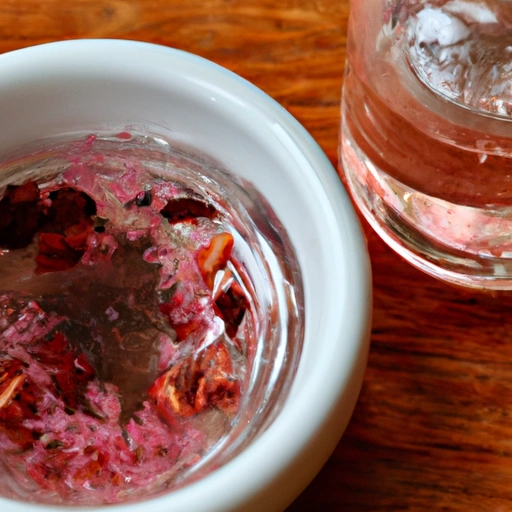Umeboshi Vinegar
Description

Umeboshi vinegar, also known as ume plum vinegar or umesu, is a traditional Japanese condiment made from the pickling brine used to ferment ume plums, the fruit of the Prunus mume tree. The plums are typically pickled with sea salt and shiso leaves, lending the resulting vinegar its characteristic pink hue and a unique blend of tart, salty, and subtly sweet flavors. As a cherished ingredient in Japanese cuisine, umeboshi vinegar is used to enhance the flavors of various dishes, and is valued for both its culinary versatility and potential health benefits.
Common uses
Umeboshi vinegar is typically used as a seasoning in salad dressings, dips, and sauces. It can also be used as a substitute for salt or other vinegars to add a unique flavor to dishes. Additionally, it is often used as a digestive tonic or to make a refreshing beverage when diluted with water.
Nutritional value
Calories
Umeboshi vinegar is low in calories, making it a suitable addition for those monitoring their caloric intake.
Protein
It contains negligible amounts of protein.
Fat
This vinegar is virtually fat-free.
Carbohydrates
Carbohydrates in umeboshi vinegar are mostly in the form of simple sugars from the plums, though in relatively low quantities.
Vitamins
It contains some vitamins, including trace amounts of vitamin C and B vitamins, inherent from the ume plums.
Minerals
Umeboshi vinegar is a source of minerals such as iron, calcium, and phosphorus, as well as being particularly high in potassium.
Health benefits
Umeboshi vinegar is believed to aid in digestion, help maintain a balanced pH in the body, and stimulate appetite. Its high potassium content may also contribute to electrolyte balance. However, these benefits have not been scientifically proven and thus should be considered with caution.
Potential risks
Due to its high sodium content, umeboshi vinegar should be consumed in moderation, especially by individuals with hypertension or those on a low-salt diet. Overconsumption may lead to an imbalance of electrolytes and other health issues.
Common recipes
It is often used in the preparation of sushi rice, dressings for cold noodle salads, and as a seasoning in pickled vegetables.
Cooking methods
While not typically used in cooking methods involving heat, umeboshi vinegar can be added to dishes just before serving to preserve its flavor profile.
Pairing with other ingredients
It pairs well with greens, cucumbers, and grains. Its tangy flavor also complements fatty fish and meat dishes.
Summary
Umeboshi vinegar is a versatile Japanese ingredient with a tart and salty flavor profile that can enrich a variety of dishes. While it provides certain nutritional benefits, it should be enjoyed in moderation due to its sodium content. Its adaptability to different culinary styles makes it a valuable addition to global cuisine, allowing chefs and home cooks alike to explore new flavor dimensions using both metric and customary units.